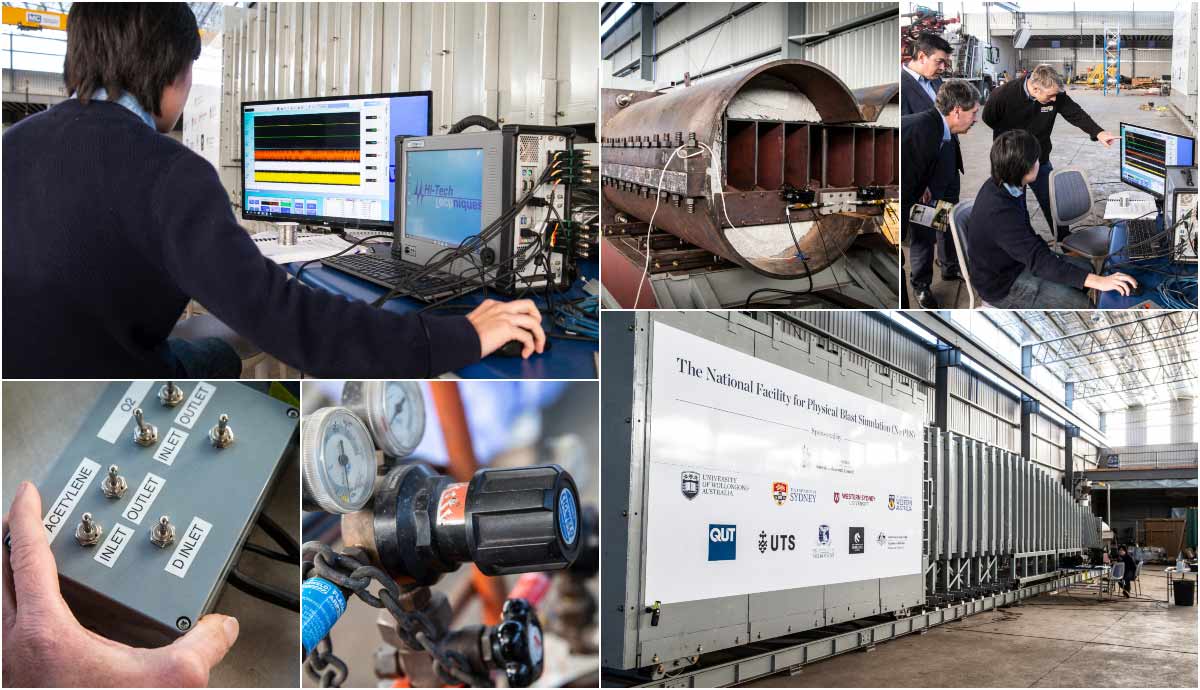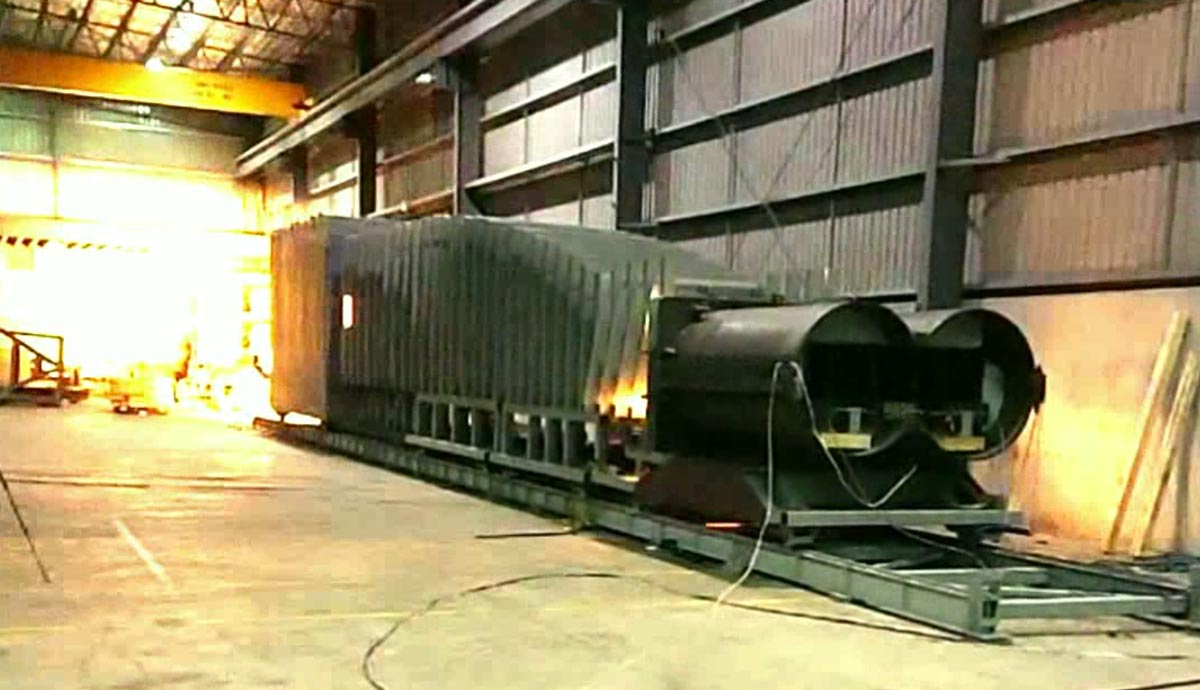June 20, 2018
Blast simulator to push the frontiers of blast protection research
State-of-the-art blast facility to improve safety for people and infrastructure
The University of Wollongong (UOW) has unveiled a large-scale controlled blast simulation facility that will enable researchers to better understand blast behaviour, which will lead to improved security and safety of people and infrastructure.
The National Facility for Physical Blast Simulation (NFPBS) at UOW’s 3000 square-metre research laboratory in Russell Vale comprises a purpose-built blast simulator that is the largest of its kind in the world.
The blast simulator uses compressed gas or gaseous mixture detonation to create an explosion that sends a shockwave down the chamber, mimicking the behaviour of a real blast.
A target, or test piece, can be mounted in the reaction frame or inside the chamber to measure the effects of the blast.
Its maximum blast power produces an air-blast equivalent to five tonnes of TNT at a distance of 30 metres.
A high-speed data acquisition system and high-speed cameras are used to record multiple channels of data related to blast pressure, structural deformations and material strain.
 The NFPBS facility will allow systematic, highly controlled blast experiments at much lower cost, greater safety and higher fidelity than field trials.
The NFPBS facility will allow systematic, highly controlled blast experiments at much lower cost, greater safety and higher fidelity than field trials.
The NFPBS will be used to conduct experiments that further knowledge of blast behaviour and blast protection for building components such as windows, doors, columns, plates and walls, through to scale models of bridges, dams, tunnels and buildings, or entire city blocks.
It could even be used to help better understand what happens to the human body, particularly the brain, when hit by a blast wave.
Blast injuries, including concussion, are poorly understood due to a lack of focal or impact point for the injury and no way to observe what happens when the blast wave impacts the person.
Yet, with thousands of military personnel having experienced the effects of blasts, researchers want to know what the immediate and long-term effects are on the body.
A replica model of a full human body or human body part, such as the brain, could be used in the chamber for repeated experimentation to observe what happens in the milliseconds when the blast-wave impacts.
The National Facility for Physical Blast Simulation (NFPBS) is a collaboration of eight Australian universities and the Defence Science and Technology Group (DSTG) and funded by the Australian Research Council (ARC) through the $400,000 Linkage Infrastructure, Equipment and Facilities (LIEF) grants scheme as well as contributions from partner organisations and universities.
 A test firing of the controlled blast simulation facility at the National Facility for Physical Blast Simulation.
A test firing of the controlled blast simulation facility at the National Facility for Physical Blast Simulation.
Professor Brian Uy and Associate Professor Alex Remennikov led a group of researchers from eight Australian universities and the DSTG to win a LIEF Grant in 2013.
Associate Professor Alex Remennikov, from the School of Civil, Mining and Environmental Engineering at UOW, said a large-scale blast simulator was the equivalent in importance to blast protection research as the wind tunnel is to aerodynamics research.
“Currently, blast-resistant designs are based on observations of actual explosive testing.
"But that type of testing can be dangerous, expensive and uncertain in nature, leading to a body of blast data that is very limited, and consequently many aspects of blast response of structures remain unknown.
“The NFPBS facility will allow systematic, highly controlled blast experiments at much lower cost, greater safety and higher fidelity than field trials.
"This will help develop design concepts and standards for protecting infrastructure, including individual components such as windows, doors, columns, plates and walls, to system models such as bridges, dams, tunnels and buildings, and to models of city or urban environment.”
Professor Brian Uy, Head of the School of Civil Engineering at the University of Sydney, said the laboratory environment would allow for repeatability of experiments.
“Repeated testing will enable engineers to optimise the design of structural components for blast resistance and potentially reduce their cost while maintaining the integrity of the materials and components and ultimately the safety of the community.”
:format(jpg)/prod01/channel_3/assets/live-migration/www/images/content/groups/public/web/media/documents/mm/uow248544.jpg)